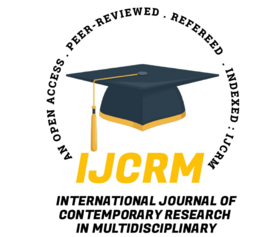International Journal of Contemporary Research In Multidisciplinary, 2023;2(1):47-51
An Impact of Postural Corrective Techniques of Lifting Items in Adolescents Physical Activity and Mental Development
Author Name: Towseef Ahmad Taily; Jai Prakash Bhukar;
Abstract
Introduction: Adolescence is a critical period for developing motor skills and healthy habits, making corrective techniques essential for preventing physical ailments and enhancing mental resilience. However, there is a lack of research on the effects of postural correction during lifting tasks on both physical and psychological development in adolescents. This study aims to fill this gap by investigating how postural correction influences physical health and mental well-being. Poor lifting posture, such as a curved spine and straight knees, can result in musculoskeletal issues and negatively impact self-esteem.
Objectives: This study aims to investigate the impact of postural corrective techniques in lifting items on the physical activity and mental development of adolescents aged 12-16 years. It focuses on improving posture through corrective exercises and assessing the resulting changes in physical activity levels and psychological well-being.
Methods: A Total of 30 subjects were selected randomly (15 boys and 15 girls) for this study from the state of Haryana. Posture assessment was conducted using Kinovea software, which revealed poor lifting postures among most of the subjects, such as straight knees and curved backs. A 6-week intervention program was implemented during physical education classes, incorporating corrective exercises focused on improving posture during lifting tasks. The program used various exercises and objects to promote proper lifting mechanics. Participants were evaluated before and after the intervention, focusing on spinal flexibility (extension) and lifting technique. SPSS version 27.0 was used, Paired Sample t-test, to determine whether the statistical difference is significant between pre and post-intervention. The significance level was set at p<0.05.
Results: The results show statistically significant differences between pre- and post-intervention assessments (p<0.05), confirming the effectiveness of the intervention.
Conclusions: it can be concluded that the specific corrective exercise programs for adolescents will be beneficial in promoting and providing a good health and a better quality of life ahead.
Keywords
postural correction, lifting techniques, physical activity





